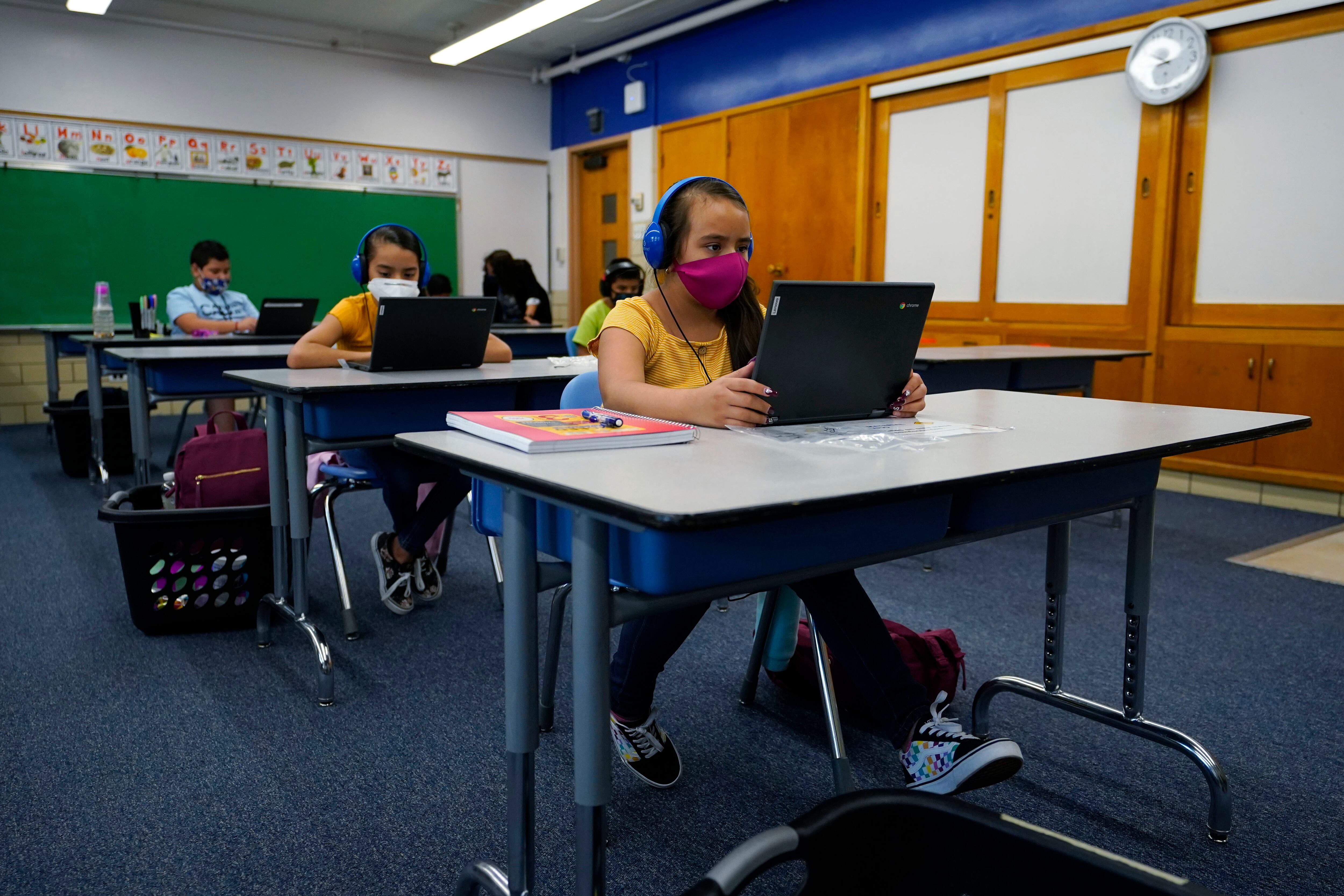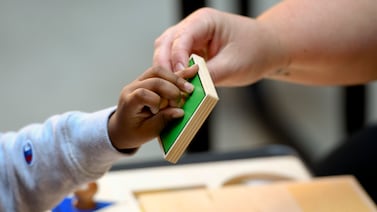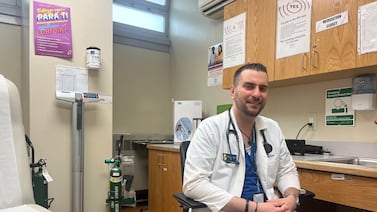Denver’s Newlon Elementary School is using its share of federal coronavirus relief dollars to keep class sizes small and ensure students have access to mental health providers.
Grant Beacon and Kepner Beacon middle schools are adding deans of culture at each campus.
George Washington High School is using the funding to create two new positions: one dedicated to helping ninth-grade girls transition into high school and another part-time job inspired by National Public Radio’s StoryCorps feature. The new part-time staff member will help students record and share their personal stories with each other.
The two new staff members hired by Principal Kristin Waters are recent George Washington alumni. Both are Black, an important step toward fostering diversity and inclusion at a school with a history of segregation between its traditional and more rigorous classes.
“It’s about relationships and community,” Waters said of how her school chose to spend its share of the relief dollars, about $116,000. “The academics will come. When kids want to be here, when they know who’s here with them, the academics come into play.”
Denver Public Schools received $302.8 million in the second and third round of federal education relief funding, which must be spent in the next three school years. About $97.8 million will be passed along to Denver charter schools, leaving $205 million for district-run schools.
Denver’s plan for spending that money includes giving $28.7 million directly to schools for principals to spend as they see fit within the parameters set by the federal government. The district doled out $16 million this school year, and it plans to reduce that amount each year to wean schools off the federal funding rather than cut them off abruptly in 2024.
All six schools contacted by Chalkbeat spent the money on staff, though Alex Magaña, executive director of the two Beacon middle schools, expressed reservations.
“Since this was a one-shot stimulus, we were reluctant in hiring too many additional staff members,” he said. The Beacon schools also spent part of their funding on an online summer school program for about 100 students this past summer.
Here’s how Denver will spend the rest of its federal funding over the next three years:
$28.7 million on accelerated learning
Because of the challenges of remote learning, some students missed out on key academic concepts last school year. Rather than re-teach those lessons, a strategy called remediation, Denver Public Schools is instructing teachers to deploy a technique called accelerated learning.
In accelerated learning, teachers teach grade-level lessons but embed mini reviews of concepts students may have missed the year before. For example, students in second grade are supposed to learn how to add and subtract numbers up to 100. But if they didn’t master adding and subtracting numbers up to 20 in first grade, doing that will be difficult.
In teaching how to add and subtract bigger numbers, second-grade teachers will give their students a first-grade test question. Based on their answers, the teacher will know whether to review adding and subtracting up to 20 as part of the lesson.
Tamara Acevedo, deputy superintendent of academics, calls this concept “just-in-time support.” The federal relief money will pay for resources and training for teachers.
“Instead of starting the year assuming students are behind and need a review, we are teaching for grade-level standards and grade-level content,” Acevedo said.
The district also bought a new curriculum focused on social and emotional learning, and plans to spend some of this money on tutoring for students that will start later this fall, she said.
$26.6 million to maintain school staffing and run a virtual learning program
As of the first day of school Monday, 1,350 students had signed up for the district’s virtual learning program. That’s about 1.5% of the district’s 90,000 students, which is on par with other large districts around the state. Unlike last year, Denver’s virtual program will be run centrally this year, with dedicated teachers. Federal funds will cover the cost.
Other federal funds will go to offset the impact of enrollment losses, which are sizable. Denver, Colorado’s largest school district, lost more than 3% of its students last school year, and the district is forecast to lose even more in the future.
Enrollment losses have a financial impact on schools, which are funded per pupil. Through the use of federal funds, the district is aiming to keep schools’ staffing as stable as possible this year; even if a school has fewer kindergarten students, it won’t have fewer kindergarten teachers, said Chief Financial Officer Chuck Carpenter.
$25 million on ventilation and air quality
The district is currently assessing which school buildings most need ventilation improvements, slated to happen next summer at the earliest, Carpenter said. The district is aiming to invest in three areas: repairing components that aren’t working well, installing digital controls that allow staff to more easily adjust the ventilation, and upgrading air filters.
This work would be in addition to the $4.9 million in upgrades the district did in summer 2020.
$10 million on technology
This is to purchase more computers for students to ensure each student has a device. This is on top of $11 million that the district spent last school year on technology, Carpenter said.
$12.1 million on compensatory services for students with disabilities
Students who receive special education services have individualized plans that detail the services they’re entitled to receive. When schools switched to remote learning, many students didn’t receive all of those services because it was hard to deliver them virtually. As such, those students are entitled to compensatory services to make up for the services they missed.
$12.2 million to subsidize district child care programs and food services
Normally, these programs are self-sustaining in that the revenue they generate pays for the services they provide. But with the possibility of remote learning and fewer students in school buildings, Carpenter said, the district wanted to make sure the programs could break even and keep the same number of staff for the next three years.
$35 million on general operations
This funding will shore up the district’s budget, which otherwise might run a deficit. Carpenter said this money will be spent on expenses allowable under federal law. That includes initiatives to catch students up on learning lost during the pandemic and provide mental health services in schools, according to the Colorado Department of Education.
$26.7 million on needs that may come up over the next two years
This money could be spent to invest more in strategies that are working, or on new needs that are unforeseen right now, Carpenter said. “We’ll keep looking at this,” he said.






